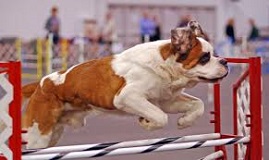Usually, adult dogs are more tolerant of a puppy than another adult dog. The original resident dog can set the rules of the relationship, because puppies under six months do not normally challenge an adult dogs authority. However, a puppys natural exuberance could be annoying to some older dogs, and they might growl or snap when a little one comes close by. Most of the puppies respect the message of the older dog, but there are always some who think its a game and try to bother the older dog again, hoping to get some playing time out of it. Keep the puppy and the adult dogs separated, except for when they are being supervised, until they can work out a peaceful and balanced relationship.

It will help to introduce your new dog to your existing dog in a neutral place, such as a park or a friends yard, especially if he is not used to having other dogs or chases away those who trespass his property. Manage your current resident while someone else is handling the new dog. Make sure both dogs are on leashes. For a few minutes, let them observe each other. Bring them closer together until you see that they are interested and curious about each other, but still leave a decent amount of space between them so that neither one feels too crowded. Then, you and your helper should walk the dogs along parallel paths, while keeping a safe distance so the dogs can relax. Keeping the mood light and positive, you can gradually bring your paths closer together. You can allow them to meet when they accept the idea of being walked several feel from each other. Once they are comfortable together, you can take them home and reintroduce themselves there, by repeating the same steps. The dogs should not show any leash aggression, as long as you begin the process with them far enough apart.
Should you introduce your new dog without an assistants help, put the new dog behind a fence and slowly walk your existing dog nearby on a leash until the two dogs are used to each others sight and smells. If they dont show aggressive or defensive behaviors, pet both of them and let them smell each others scent from your hands. If that goes peacefully, allow them to meet, with their happy wagging tails.
If you have more than one resident dog, dont overwhelm the new dog and introduce them one at a time. First, introduce the friendliest resident dog. After he has said hello and played, bring out the next resident to be introduced. After the new dog has met all the members of your group individually, start all over again and add the other dogs one by one until everyone is interacting peacefully.
Once you are confident that the older dog will not injure the puppy, you can leave them together. A lot of times, the older dog can take on a dominant role with the new puppy and he can come across strong. Therefore, do not dont overcorrect the older dog for correcting the younger one. Correction when a puppy is out of line is good, but blatant aggression is not okay. Its up to the senior dog of the family to let the puppy know when hes behaving badly, now that there is no mom or siblings.
Its essential that you do not over coddle the new puppy. For now, the family dog is the king of the house, so make sure that he keeps on feeling special. In the weeks and months to come, the two dogs will work out their issues of dominance.




